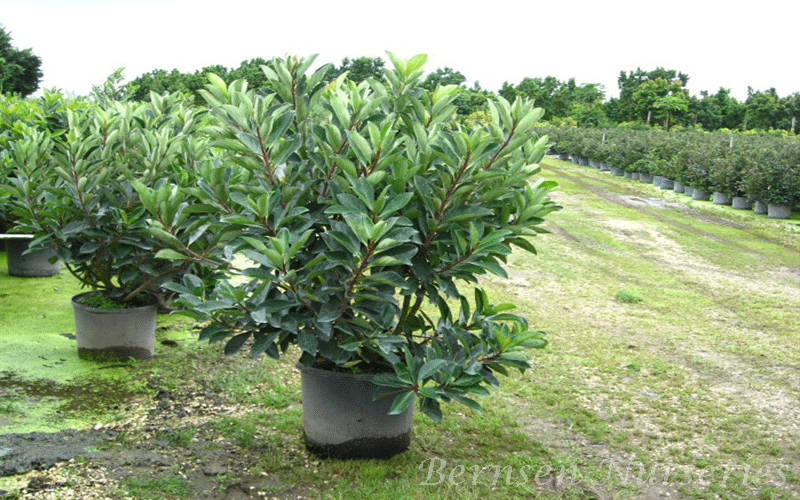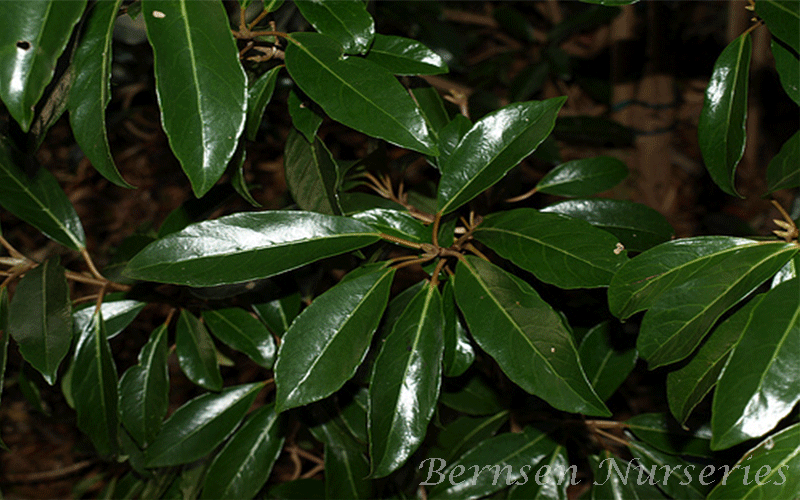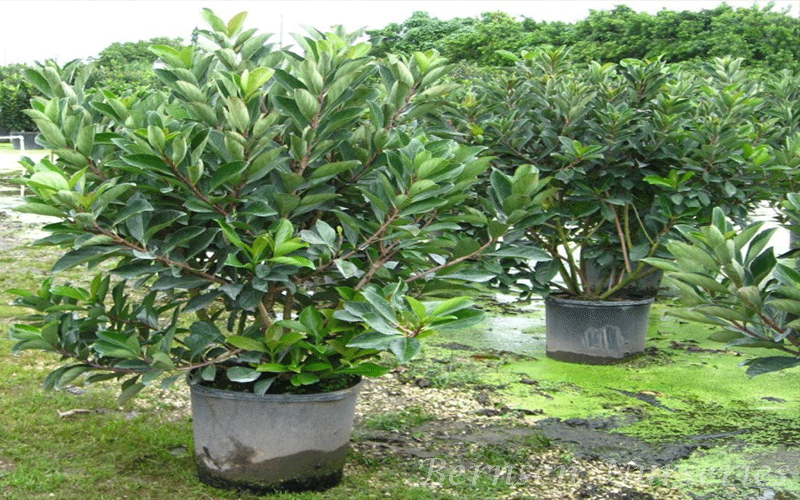AWABUKI VIBURNUM Naples
This is a large, evergreen shrub capable of growing to twenty feet tall. The glossy leaves are about seven inches long. Clusters of fragrant white flowers appear in late spring to early summer. Its fruits are red at maturity. Grow it in a sunny to partly shaded site in a well-drained, reasonably moist, acid soil.
It is recommended for zone 8a and south. One report says foliage damage occurs at 10 degrees F. Large, leathery, medium to light green, highly lustrous leaves and clusters of extremely fragrant, small, white flowers, completely covering the plant in springtime, make Awabuki Sweet Viburnum a plant with great potential.
Plant Information: The shiny leaves are quite distinctive from the dull, dark green, blunt-tip leaves of the species. For some reason, the species has fallen out of favor as a small tree in recent years, but it is often used as a screen or clipped hedge. Its dense, spreading, evergreen habit makes Sweet Viburnum suitable for use as a small tree, reaching only about 15 to 20 feet at maturity, with an open, multibranched, rounded canopy.
The flowers are often followed by small, showy red berries which are highly ornamental and turn black when ripe. This is a small tree which should be tried, and some nursery operators are beginning to grow it. Thirty-year-old plants grow to about 18 feet tall and wide.
Use and Management: Sweet Viburnum grows quickly in full sun or partial shade on a wide variety of soils. Relatively maintenance free, Sweet Viburnum grown as a tree will require only occasional pruning to control size and shape. This would be a good tree for planting along a street where power lines or other obstructions limit overhead space. The cultivar "Emerald Lustre" has larger leaves and "Nanum" is a dwarf form. Propagation is by cuttings or layerings.
Pests: This tree is usually free of pests. Viburnum aphid is gray to dark green and feeds in clusters at the tips of the branches, causing leaf curl. The insects can be dislodged with high pressure water spray from the garden hose. Inspect the stems of unhealthy looking plants for possible scale infestations. If found, spray with horticultural oil for some control.
Caterpillars eat holes in the new foliage. This may be more troublesome in the nursery than in the landscape. Thrips, mites, white-fly, bagworms, and sooty mold are also problems, but none are normally serious.




